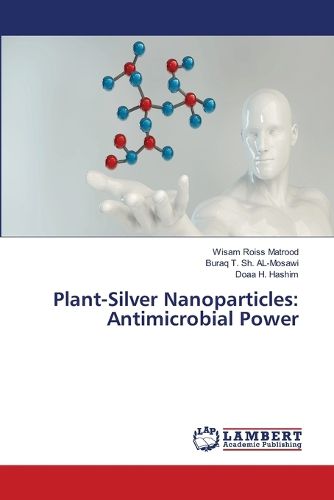Readings Newsletter
Become a Readings Member to make your shopping experience even easier.
Sign in or sign up for free!
You’re not far away from qualifying for FREE standard shipping within Australia
You’ve qualified for FREE standard shipping within Australia
The cart is loading…






This book focuses on the green synthesis of silver nanoparticles (AgNPs) using plant extracts from Capparis spinosa (caper plant) and Allophylus serratus, emphasizing their eco-friendly, cost-effective, and non-toxic approach compared to traditional chemical methods. AgNPs exhibited strong antibacterial activity against Gram-positive (Staphylococcus aureus, Bacillus subtilis) and Gram-negative (Escherichia coli, Pseudomonas aeruginosa) pathogens Plant-mediated synthesis avoids toxic byproducts and aligns with green chemistry principles.Nanoparticles showed stability, high surface-area-to-volume ratios, and biocompatibility.The book underscores the potential of plant-derived AgNPs as sustainable alternatives for combating microbial resistance and advancing nanomedicine. Experimental validation and scalability for industrial applications are recommended for future work.
$9.00 standard shipping within Australia
FREE standard shipping within Australia for orders over $100.00
Express & International shipping calculated at checkout
Stock availability can be subject to change without notice. We recommend calling the shop or contacting our online team to check availability of low stock items. Please see our Shopping Online page for more details.
This book focuses on the green synthesis of silver nanoparticles (AgNPs) using plant extracts from Capparis spinosa (caper plant) and Allophylus serratus, emphasizing their eco-friendly, cost-effective, and non-toxic approach compared to traditional chemical methods. AgNPs exhibited strong antibacterial activity against Gram-positive (Staphylococcus aureus, Bacillus subtilis) and Gram-negative (Escherichia coli, Pseudomonas aeruginosa) pathogens Plant-mediated synthesis avoids toxic byproducts and aligns with green chemistry principles.Nanoparticles showed stability, high surface-area-to-volume ratios, and biocompatibility.The book underscores the potential of plant-derived AgNPs as sustainable alternatives for combating microbial resistance and advancing nanomedicine. Experimental validation and scalability for industrial applications are recommended for future work.